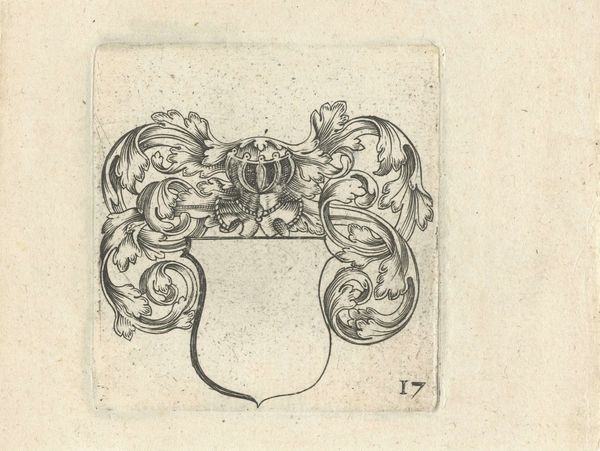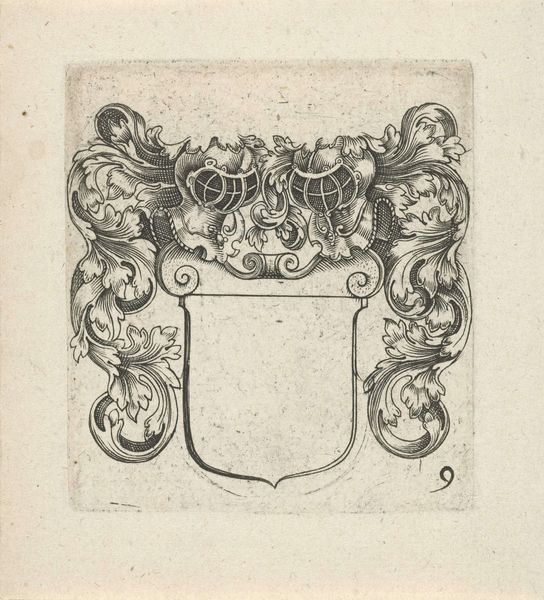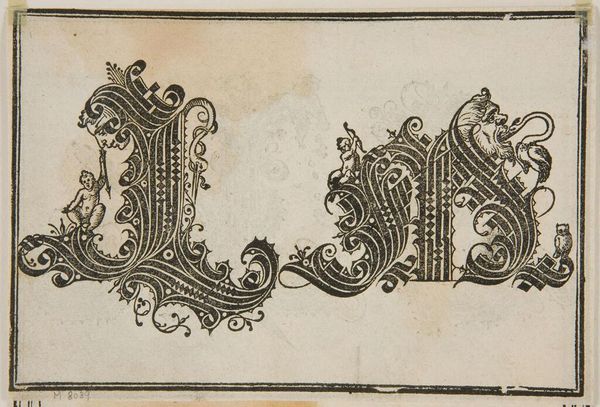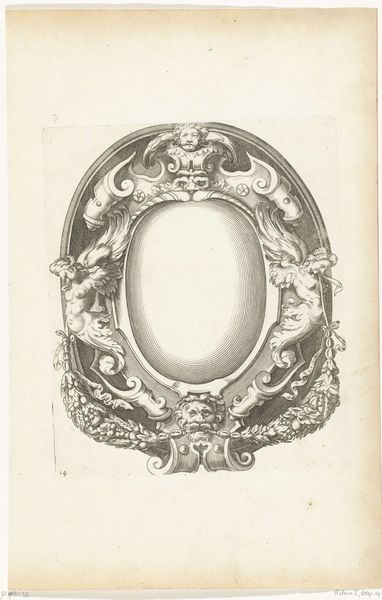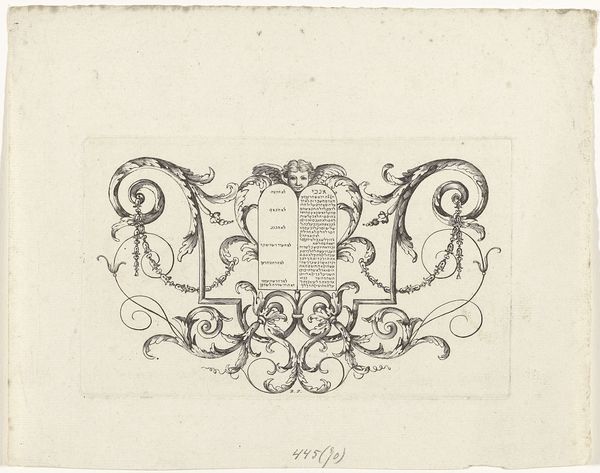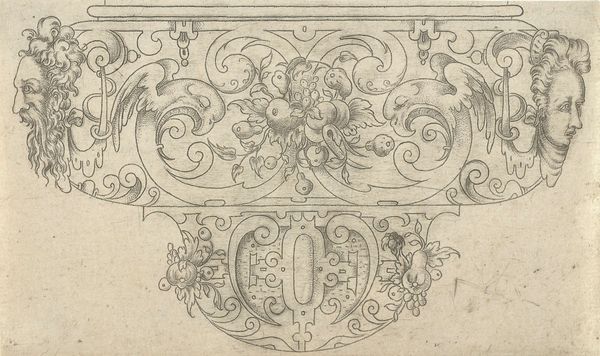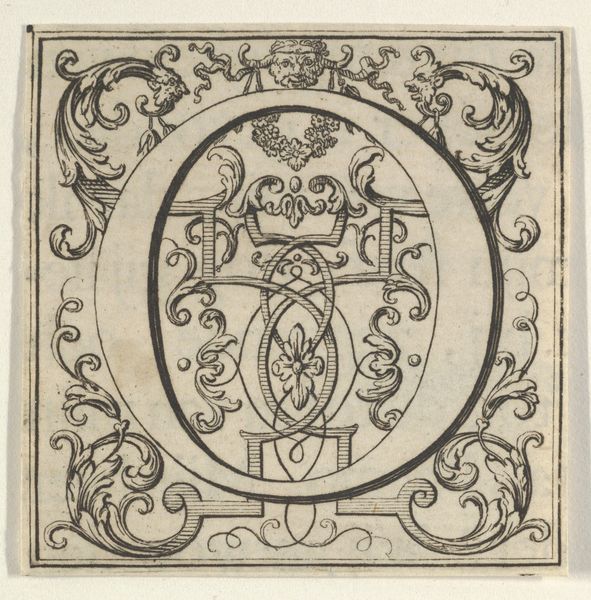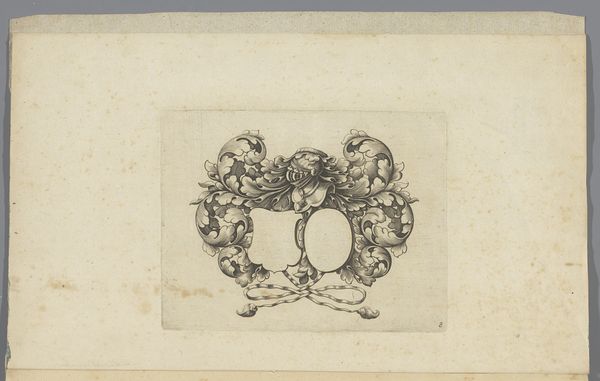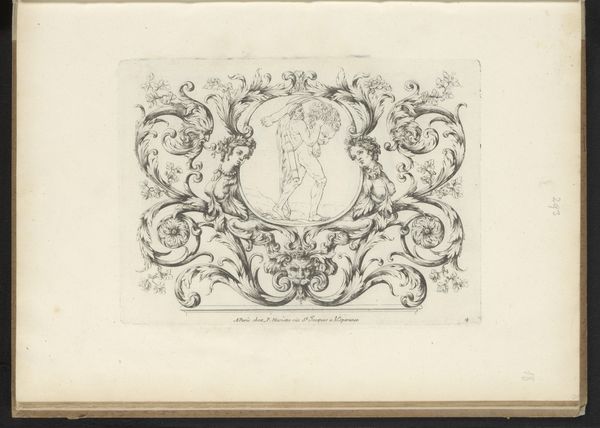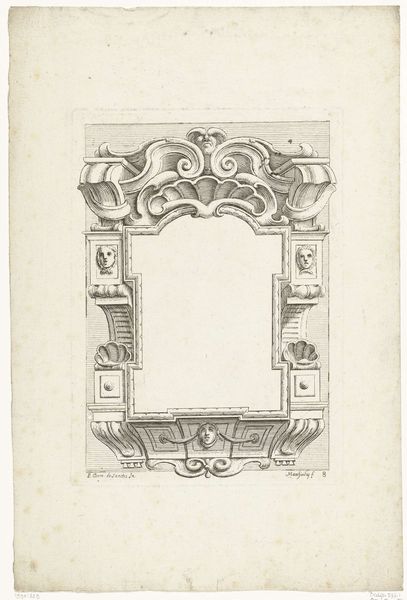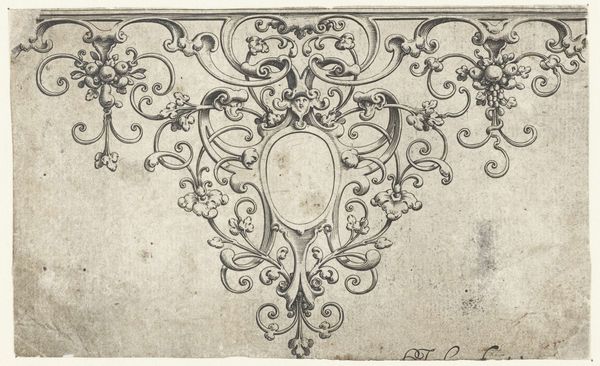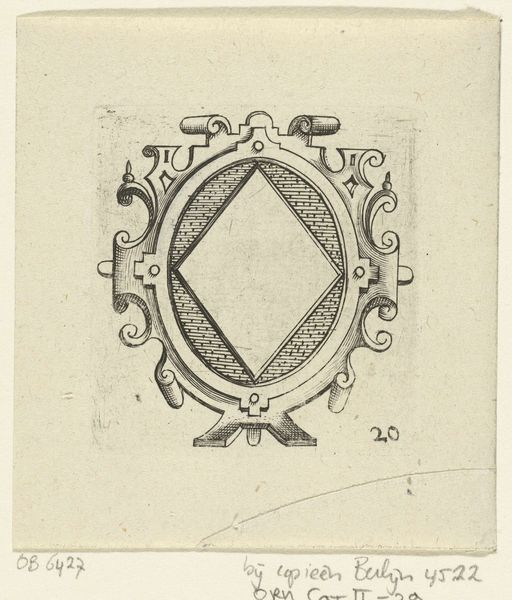
print, engraving
#
baroque
# print
#
old engraving style
#
geometric
#
pen-ink sketch
#
line
#
pen work
#
engraving
Dimensions: height 59 mm, width 53 mm
Copyright: Rijks Museum: Open Domain
Editor: Here we have an engraving from 1625, titled "Wapenschild onder gebogen fronton," attributed to an anonymous artist, currently held at the Rijksmuseum. It’s a rather austere composition, mostly linear, but the little angel at the top does inject a certain playfulness. What stands out to you about this print? Curator: Its intrinsic value lies in the elegant geometry, a testament to Baroque aesthetics and the masterful use of line. Note how the composition is meticulously structured: the curved fronton echoing the shield below. Observe the relationship between the rigid, architectural forms and the soft, flowing tendrils. The engraving showcases an interplay of structure versus fluidity and stasis versus motion through line work. Editor: So it’s the formal relationships between the shapes that carry the meaning? What about that cherubic face? Is that purely decorative or does it serve a function? Curator: The cherub’s placement above serves less to signify an ideal and more to augment the symmetrical disposition of the entire plate. Notice how its rounded features contrast with the rectangular panel immediately below, generating a subtle, yet crucial visual tension. What the blank shield contains matters less than its geometric form. Editor: I see! So even though it’s representational, it ultimately functions as a formal element within the overall composition, right? I hadn't considered that, very interesting! Curator: Precisely. Form dictates function in such compositions. The details serve an aesthetic system that surpasses simple iconography. Editor: I appreciate your emphasizing the geometric and structural elements. I will look at engravings in the Baroque style with new eyes! Curator: Indeed, paying closer attention to structure can illuminate entire movements and historical periods.
Comments
No comments
Be the first to comment and join the conversation on the ultimate creative platform.

